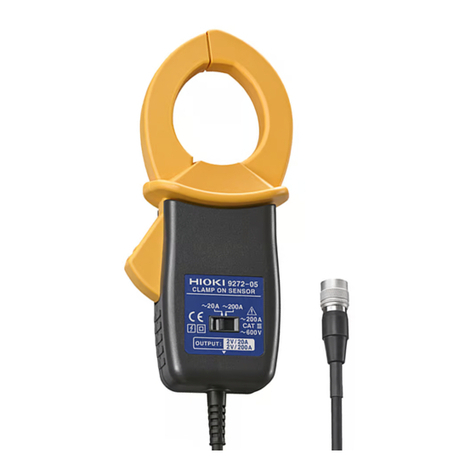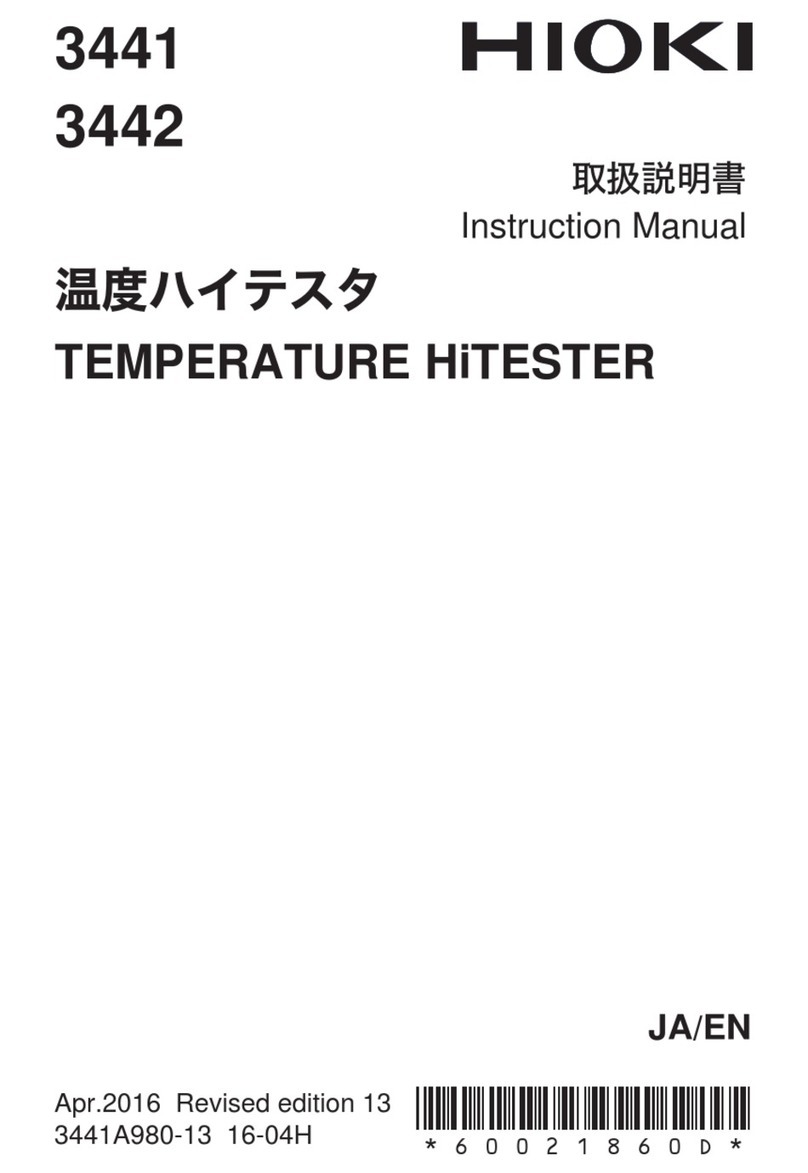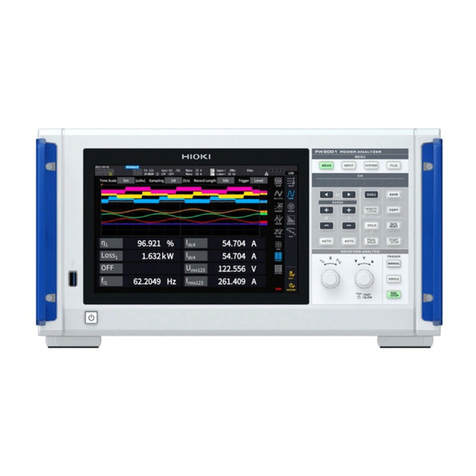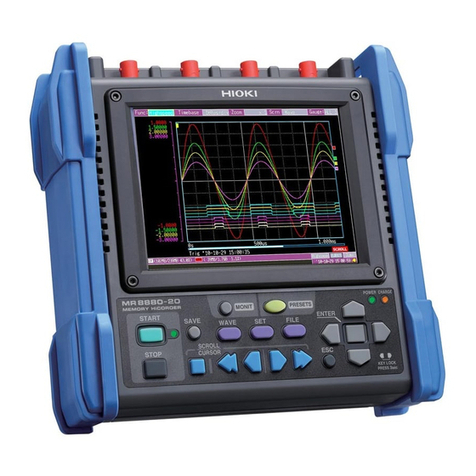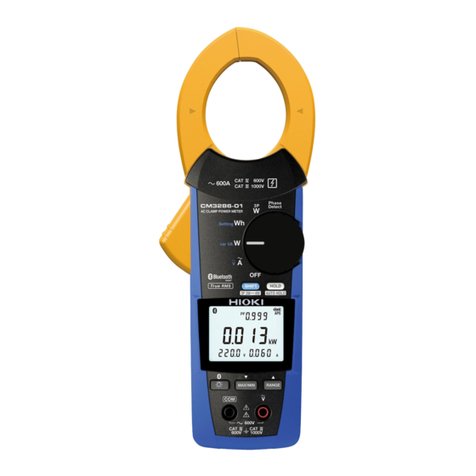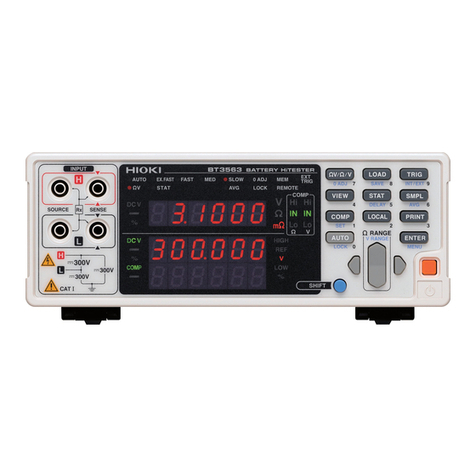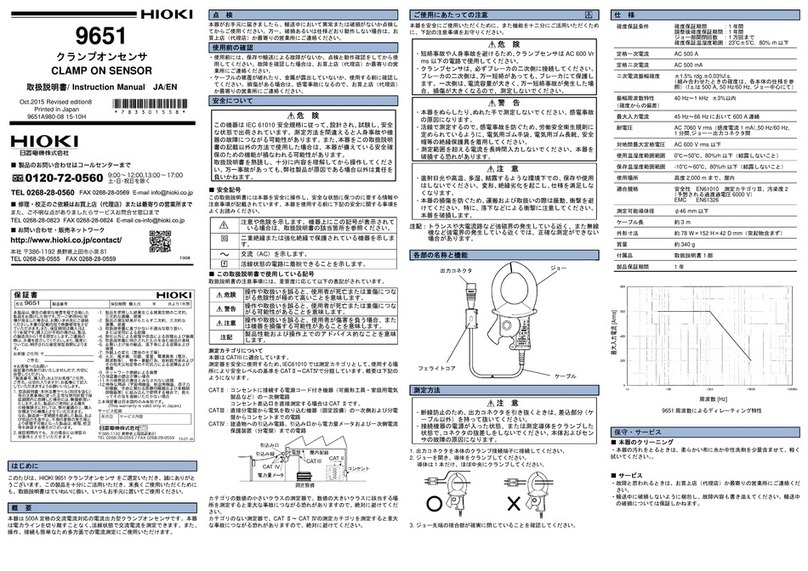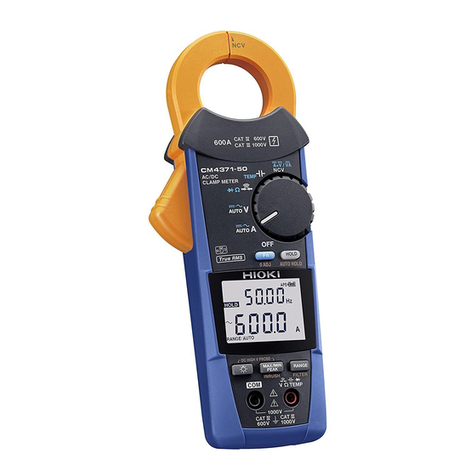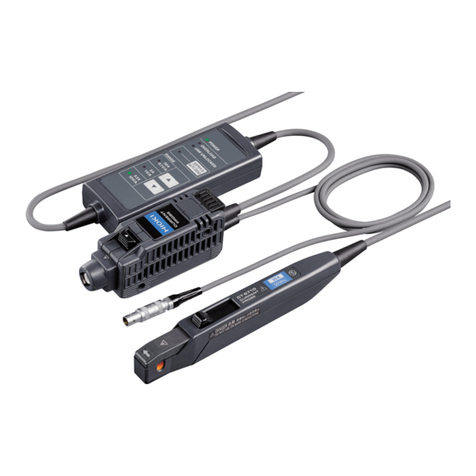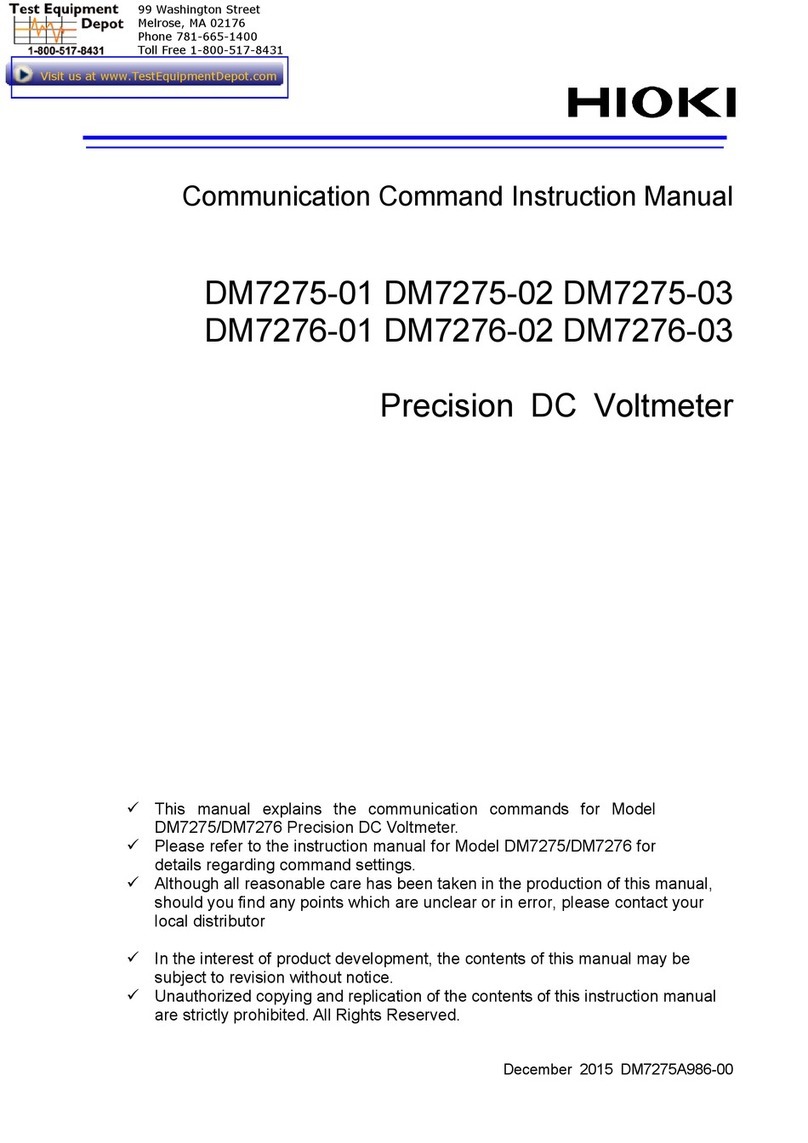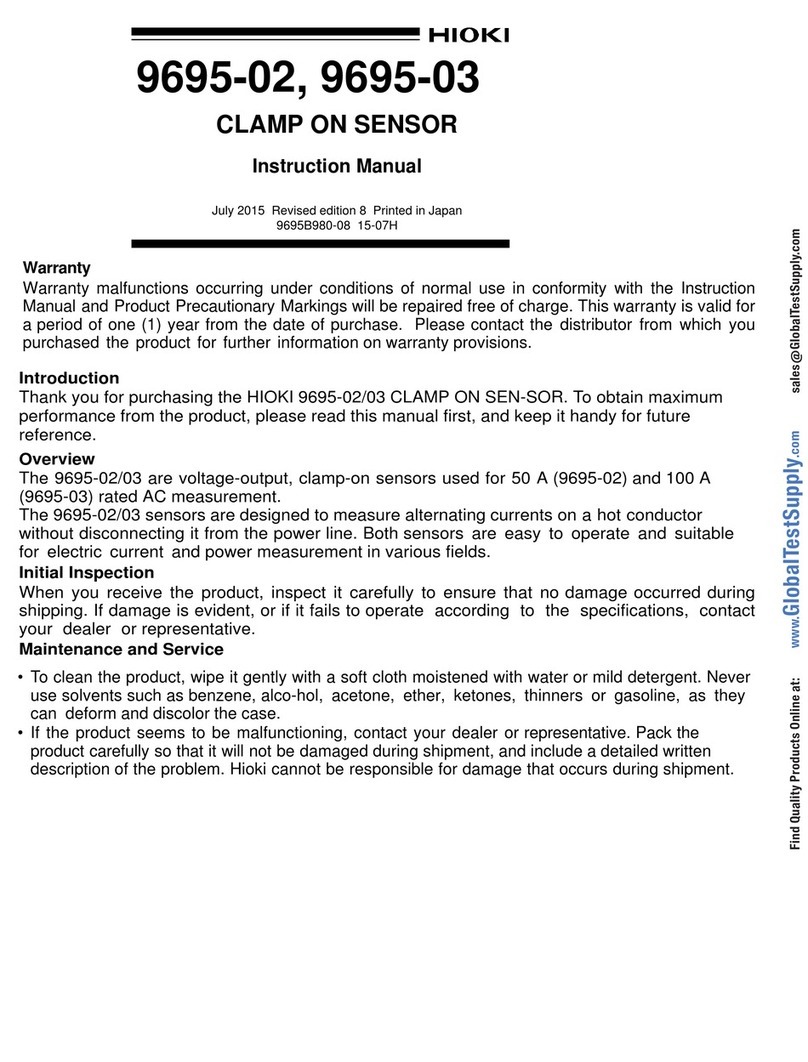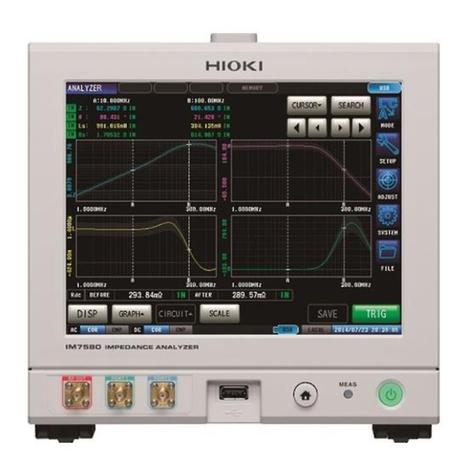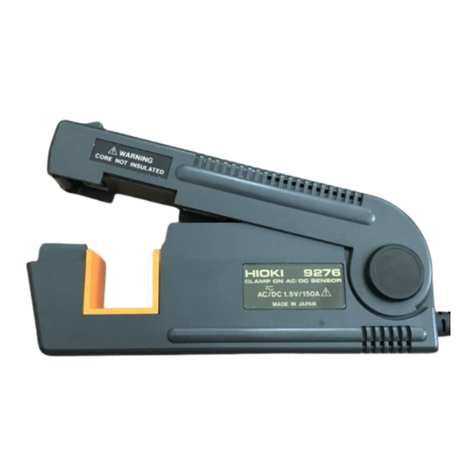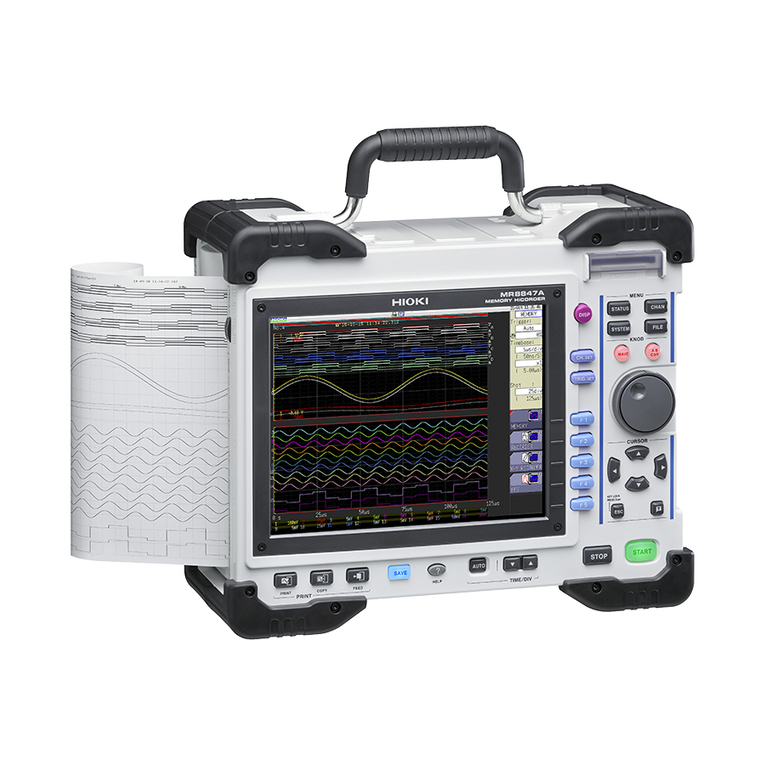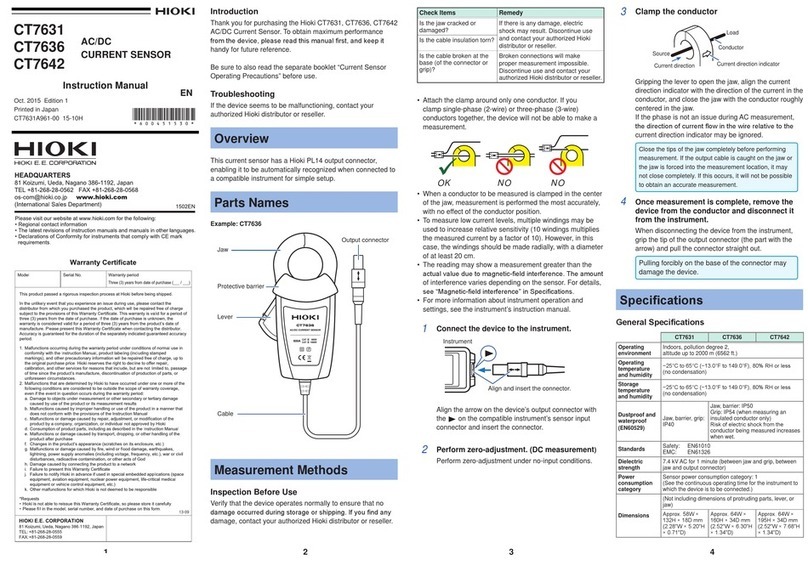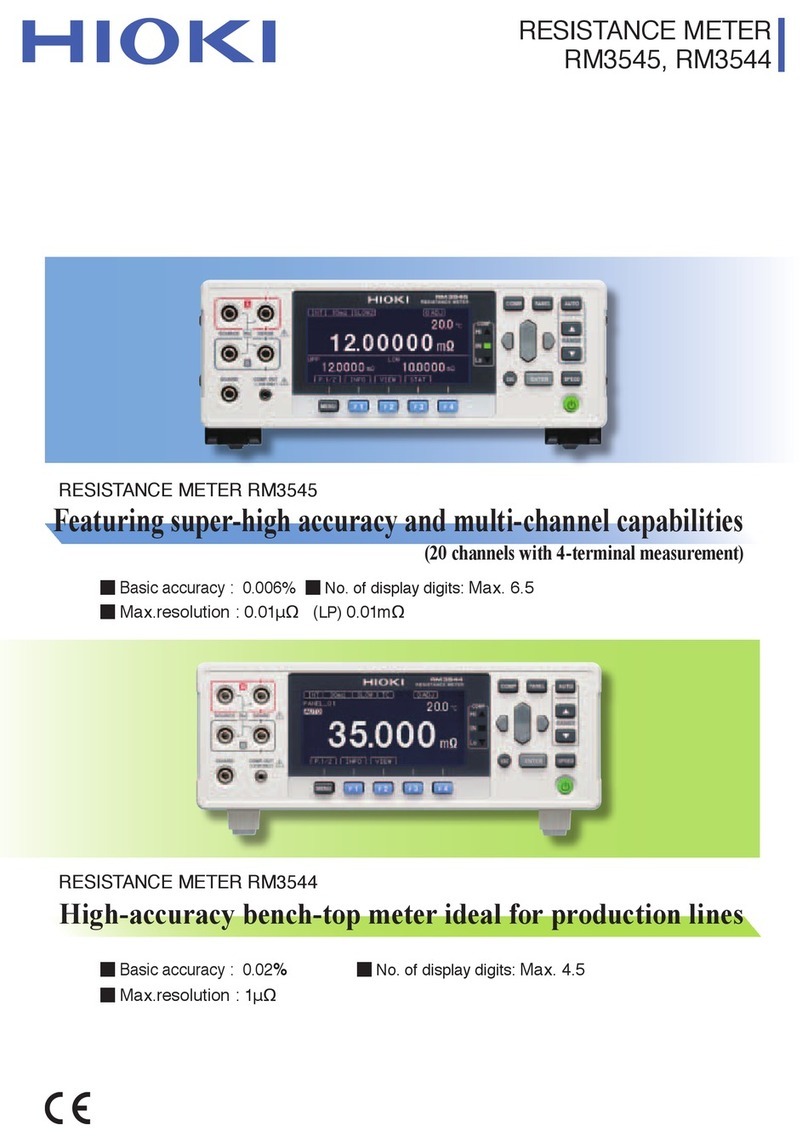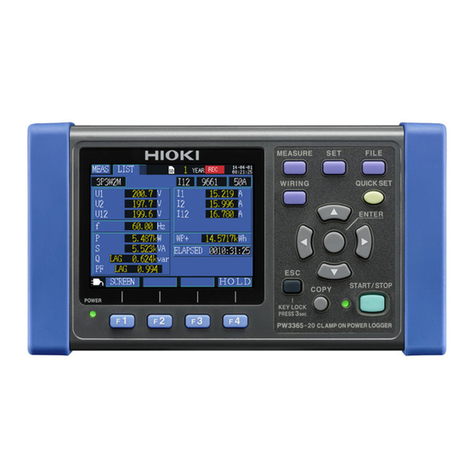
Contents
ii
6.3 Changing Panel Names .....................75
6.4 Deleting Panel Data ...........................76
Chapter 7 System Settings 77
7.1 Disabling and Enabling Key Operations
...........................................................78
Disabling Key Operations
(Key-Lock Function) ................................. 78
Re-Enabling Key Operations
(Key-Lock Cancel) ................................... 79
7.2 Power Line Frequency Manual Setting
...........................................................80
7.3 Enabling or Disabling the Key Beeper 82
7.4 Adjusting Screen Contrast ..................83
7.5 Adjusting the Backlight .......................84
7.6 Initializing (Reset) ...............................85
Default Settings ........................................ 87
Chapter 8 External Control
(EXT I/O) 89
8.1 External Input/Output Connector
and Signals......................................... 90
Switching between Current Sink (NPN) and
Current Source (PNP) .............................. 90
Connector Type and Signal Pinouts ........ 91
Signal Descriptions .................................. 93
8.2 Timing Chart .......................................97
From Start of Measurement to Acquisition
of Judgment Results ................................ 97
Zero-adjustment timing ............................ 99
Panel Load Timing ................................. 100
BCD Signal Timing ................................. 100
Output Signal State at Power-On ........... 101
Acquisition Process When Using an
External Trigger ..................................... 102
8.3 Internal Circuitry ...............................104
Electrical Specifications ......................... 106
Connection Examples ............................ 107
8.4 External I/O Settings ........................108
Setting Measurement Start Conditions
(Trigger Source) ..................................... 108
Setting the TRIG Signal Logic ................ 110
Eliminating TRIG/PRINT Signal Chatter
(Filter Function) ...................................... 112
Setting EOM Signal ................................ 114
Switching Output Modes
(JUDGE Mode/ BCD Mode) ................... 116
8.5 Checking External Control ............... 117
Performing an I/O Test
(EXT I/O Test Function) ......................... 117
8.6 Supplied Connector Assembly ......... 119
Chapter 9 Communications
(USB/ RS-232C
Interface) 121
9.1 Overview and Features ....................121
Specifications .........................................122
9.2 Preparations before Use
(Connections and Settings) .............123
Using the USB Interface ......................... 123
Using the RS-232C Interface ................. 126
9.3 Controlling the Instrument with
Commands and Acquiring Data .......130
Remote and Local States ....................... 130
Displaying Communications Commands
(Communications Monitor Function) ...... 131
9.4 Auto-Exporting Measured Values (at End
of Measurement) (Data Output Function)
.......................................................... 133
Chapter 10Printing (Using an
RS-232C Printer) 137
10.1 Connecting the Printer to the Instrument
.......................................................... 137
10.2 Printing ............................................. 140
Printing Measured Values and Comparator
Judgments .............................................. 140
Printing List of Measurement Conditions
and Settings ........................................... 140
Chapter 11Specifications 145
11.1 Instrument Specifications ................. 145
Measurement Ranges ............................ 145
Measurement Method ............................ 145
Measurement Specifications .................. 146
About Instrument Accuracy ....................148
Functions ................................................ 149
Interface ................................................. 154
